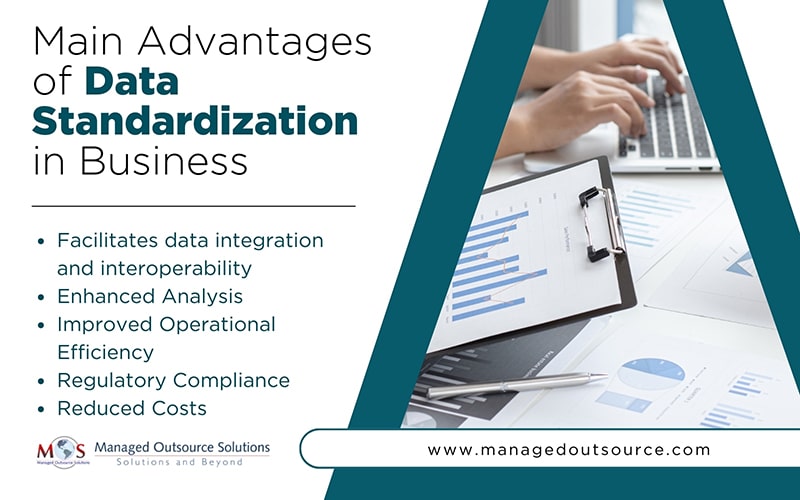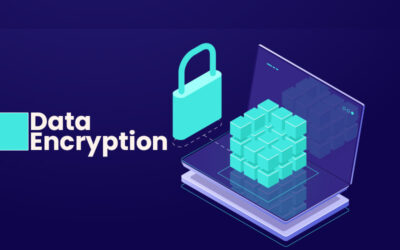In this data-driven landscape, companies collect and store databases through various methods, including customer interactions, surveys, social media, and internal databases. While collecting vast amounts of information can provide many opportunities, it can also lead to several challenges, such as increased costs, privacy risks, and information overload for businesses. To avoid these downsides, companies need to implement data quality management strategies, ensuring they gather only high-quality datasets. An effective process used for this purpose is data standardization, which enables businesses to manage, store, and analyze accurate datasets. Since handling the standardization process internally can be resource- and time-intensive, utilizing expert data cleansing services for accurate analytics is the ideal option to streamline the process.
What Is Data Standardization?
Data standardization refers to the process of transforming raw data from various sources into a uniform format to ensure it conforms to predefined rules. It is a pre-processing step performed before any business intelligence operations. As organizations collect information from disparate sources, it can lead to inconsistencies, inaccuracies, and different formats within the dataset.
Data transformation is a critical step in preparing raw data for analysis, as it involves converting information into a consistent and usable format. By converting raw inputs from various sources into uniform data formats with defined elements, organizations can improve the quality, accuracy, and relevancy of their database. This process ensures data integrity for effective data analysis and informed decision-making.
Examples of data standardization include:
- Converting units of measure such as pounds to kilograms, inches to centimeters, or gallons to liters.
- Normalizing formats into a consistent standard such as converting prices from Euros to dollars.
- Ensuring consistency in databases by converting all text into standard format such as turning all names into either lowercase or uppercase.
Key Benefits of Standardizing Data in Large Organizations
Teams in large organizations depend on accurate and accessible data to carry out various functions. From ensuring consistency across dataset to eliminating duplicate entries, standardizing data involves establishing and implementing best practices across diverse systems. Non-standardized databases can result in a variety of issues such as inefficient analysis, system incompatibility, and increased maintenance efforts. These challenges may lead to missed growth opportunities, poor campaign performance, and lost revenue. With standardization, businesses can not only prevent these problems but also gain several key benefits:
- Facilitates data integration and interoperability
If different departments within an organization use varying data formats or units without a standardized procedure, it will lead to scalability issues, inconsistent reporting, and increased overhead costs. By implementing standardization, businesses can seamlessly share information across multiple systems and platforms. A unified approach enables better collaboration and information exchange between teams, fostering data integration and interoperability within the organization.
- Enhanced Analysis
Businesses rely on analysis to identify potential risks, allocate resources effectively, and understand market dynamics. Ongoing analysis is essential for tracking performance over time, allowing for continuous improvement in areas such as customer service. With database standardization, businesses can enhance the accuracy and scope of their analysis and reporting processes. Accurate and well-analyzed reports provide a factual foundation for internal discussions, leading to more informed decision-making and long-term planning. This can improve inventory management, marketing strategies, and sales optimization, ultimately boosting the bottom line.
- Improved Operational Efficiency
Data consistency transforms business processes by centralizing disparate information sources into a single repository. This reduces the time and effort spent on activities such as data cleaning and preparation, improving productivity and operational efficiency. Additionally, it allows businesses to analyze and understand their internal activities more effectively. By assessing operational data, companies can uncover inefficiencies, bottlenecks, and areas for improvement, leading to enhanced processes and overall performance.
- Regulatory Compliance
Many sectors such as healthcare, legal, and finance operate under stringent data security regulations to protect sensitive and confidential information. Data standardization helps organizations comply with these regulations by ensuring that databases are managed consistently and accurately. Reliable data tracking and transparent reporting enable businesses to meet auditing and regulatory requirements. This adherence reduces the risk of penalties, fines, or financial losses, ensuring compliance with legal standards.
- Reduced Costs
Data quality management allows businesses to optimize storage solutions, minimize error-correction efforts, and reduce data conflicts. This improves resource allocation and prepares datasets for accurate financial analysis. By analyzing costs across various business areas, companies can identify where they are overspending, make more accurate forecasts, and set realistic budgets. This insight enhances product planning and management, ultimately improving the financial health of the organization.
Key Steps to Implement Data Standardization in Organizations
Implementing effective data standardization practices across an organization requires a well-crafted strategy that addresses data management challenges and provides solutions. Here are the key steps that companies can take to enforce standardization rules and procedures:
- Determine data elements: Assess existing datasets to understand their structure and identify key business assets like customer details, product codes, or financial records that support operations. This helps in recognizing critical data points for standardization.
- Establish standards: Establish data standards and guidelines for how data should be formatted, categorized, and stored. This includes defining data types, consistent units of measurement, and standardized naming to ensure uniformity across systems.
- Data mapping and normalization: Map data fields from various sources into a single destination field, ensuring alignment across systems. Leverage automation tools to apply normalization at this stage to eliminate redundancy and dependency by adjusting values to a common scale.
- Implement data governance: Develop and enforce a data governance framework that includes clear policies, access control, and stewardship roles. This ensures compliance with standards, security, and consistency in dataset handling across the organization.
- Monitor and maintain standards: Continuously monitor dataset quality and consistency, performing regular audits to ensure adherence to standards. Provide ongoing training to teams and update them on evolving standards and best practices for data management.
- Master data management: This ensures that critical business data—such as customer and product information—is consistent, accurate, and accessible across the entire organization
In today’s data-driven world, where information fuels critical business decisions, companies are often overwhelmed by massive volumes of unstructured information. Without proper organization, this data can quickly become chaotic—leading to inefficiencies, compliance risks, and missed opportunities. Data standardization and transformation play a key role in converting raw data into a consistent, structured, and actionable format. This not only uncovers valuable insights but also improves cross-departmental collaboration and smarter decision-making. While managing this process in-house can be complex and resource-intensive, outsourcing to professional data cleansing services offers a smarter alternative. These specialized providers ensure high data quality by cleaning, validating, and standardizing datasets—reducing redundancy, enhancing accuracy, and minimizing operational costs. By partnering with experienced data cleansing companies, businesses can avoid data overload, reduce privacy risks, and focus on driving sustainable growth in today’s competitive landscape.





